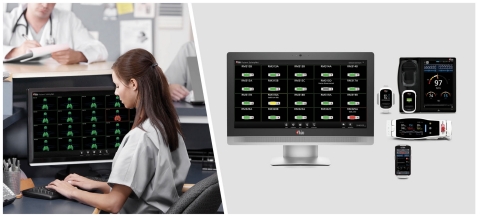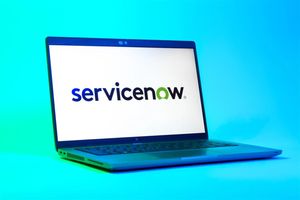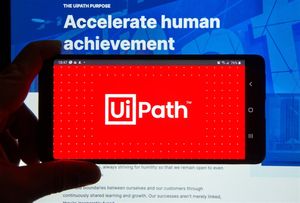Researchers Found That Use of Patient SafetyNet with Masimo SET® Pulse Oximetry and Acoustic Repsiratory Rate (RRa®) Monitoring Reduced Nursing Workload Related to Postoperative Respiratory Assessment by More Than 60%
Masimo (NASDAQ: MASI) announced today the findings of a study published in the Journal of PeriAnesthesia Nursing in which Drs. Mashasi Ishikawa and Atsuhiro Sakamoto at Nippon Medical School in Tokyo evaluated the utility and impact of Masimo Patient SafetyNet™ by surveying nurses before and after implementation.1 The researchers found that use of the remote monitoring and clinical notification system decreased the number of physical assessments needed, resulting in a reduction in the nursing workload, and also recommended the use of continuous respiratory rate and oxygen saturation monitoring (which was implemented as part of the system) after general anesthesia for patients’ safety.
This press release features multimedia. View the full release here: https://www.businesswire.com/news/home/20210516005044/en/

Masimo Patient SafetyNet™ (Graphic: Business Wire)
Noting the importance of frequent postoperative respiratory assessment, especially for patients on opioids, the researchers hypothesized that use of Patient SafetyNet, which displays near real-time information from connected bedside patient monitors at central/remote surveillance stations, could facilitate such evaluations “without major patient complications.” To study the effects of adopting such a solution, they implemented Masimo Hospital Automation™ with Patient SafetyNet and Masimo Radical-7® Pulse CO-Oximeters® at the bedside, on all general floors. After implementation, patients’ oxygen saturation (SpO2) and acoustic respiration rate (RRa®) were continuously monitored at the bedside, with the data relayed to the central Patient SafetyNet View Stations. Remote alarm notifications were programmed for the following conditions: SpO2: < 90% for > 10 seconds; bradypnea: < 8 breaths/minute for > 2 minutes; tachypnea: > 30 breaths/minute for > 2 minutes. When any of these physiological limits was violated, nurses performed a manual respiratory check (which typically involved use of a stethoscope and a pulse oximeter).
To measure the impact of the Patient SafetyNet system with continuous acoustic respiration rate monitoring, the researchers surveyed 75 nurses 3 months before and 1 month after implementation, asking about a variety of methods and problems related to postoperative respiratory monitoring before/after use of the system; the usefulness of a central/remote monitoring system; and the effects of Patient SafetyNet on their workload. Among other results, the percentage of nurses who found central remote monitoring to be useful increased from 78.7% pre-implementation to 89.3% post-implementation, and the percentage who found continuous monitoring useful increased from 88.0% to 98.7%. 96% of nurses reported that they were able to attend patient bedsides within one minute of alarm occurrence. Problems recorded in the surveys included false alarms related to tachypnea, triggered by the patient’s speaking, and a tendency to avoid early ambulation because of being continuous monitored.
In addition, the researchers collected retrospective data from patient records about the number of postoperative respiratory checks each patient received for 3 months before and 3 months after system implementation. They found that the average frequency of clinical examination was reduced from 11.0 ± 2.3 to 5.1 ± 1.3, representing a reduction of 61.3% in nursing workload related to postoperative respiratory assessment.
The researchers concluded, “The merits of the Patient SafetyNet system were that it could be useful for early detection when the respiratory condition gets worse and evaluation of the causes for deterioration of respiratory status using numerical values and waveforms. Therefore, the Patient SafetyNet system is suitable for cases requiring continuous sedative or opioid infusions, with poor general condition or depressed levels of consciousness. Continuous monitoring of respiratory rate and SpO2 after general anesthesia is recommended for patients' safety. Moreover, the Patient SafetyNet system can decrease the number of respiratory assessments of postoperative patients in the general wards, resulting in reduction of nurse’s workload.”
@Masimo | #Masimo
About Masimo
Masimo (NASDAQ: MASI) is a global medical technology company that develops and produces a wide array of industry-leading monitoring technologies, including innovative measurements, sensors, patient monitors, and automation and connectivity solutions. Our mission is to improve patient outcomes, reduce the cost of care, and take noninvasive monitoring to new sites and applications. Masimo SET® Measure-through Motion and Low Perfusion™ pulse oximetry, introduced in 1995, has been shown in over 100 independent and objective studies to outperform other pulse oximetry technologies.2 Masimo SET® has also been shown to help clinicians reduce severe retinopathy of prematurity in neonates,3 improve CCHD screening in newborns,4 and, when used for continuous monitoring with Masimo Patient SafetyNet™ in post-surgical wards, reduce rapid response team activations, ICU transfers, and costs.5-8 Masimo SET® is estimated to be used on more than 200 million patients in leading hospitals and other healthcare settings around the world,9 and is the primary pulse oximetry at 9 of the top 10 hospitals according to the 2020-21 U.S. News and World Report Best Hospitals Honor Roll.10 Masimo continues to refine SET® and in 2018, announced that SpO2 accuracy on RD SET® sensors during conditions of motion has been significantly improved, providing clinicians with even greater confidence that the SpO2 values they rely on accurately reflect a patient’s physiological status. In 2005, Masimo introduced rainbow® Pulse CO-Oximetry technology, allowing noninvasive and continuous monitoring of blood constituents that previously could only be measured invasively, including total hemoglobin (SpHb®), oxygen content (SpOC™), carboxyhemoglobin (SpCO®), methemoglobin (SpMet®), Pleth Variability Index (PVi®), RPVi™ (rainbow® PVi), and Oxygen Reserve Index (ORi™). In 2013, Masimo introduced the Root® Patient Monitoring and Connectivity Platform, built from the ground up to be as flexible and expandable as possible to facilitate the addition of other Masimo and third-party monitoring technologies; key Masimo additions include Next Generation SedLine® Brain Function Monitoring, O3® Regional Oximetry, and ISA™ Capnography with NomoLine® sampling lines. Masimo’s family of continuous and spot-check monitoring Pulse CO-Oximeters® includes devices designed for use in a variety of clinical and non-clinical scenarios, including tetherless, wearable technology, such as Radius-7® and Radius PPG™, portable devices like Rad-67®, fingertip pulse oximeters like MightySat® Rx, and devices available for use both in the hospital and at home, such as Rad-97®. Masimo hospital automation and connectivity solutions are centered around the Masimo Hospital Automation™ platform, and include Iris® Gateway, iSirona™, Patient SafetyNet, Replica™, Halo ION™, UniView®, UniView :60™, and Masimo SafetyNet™. Additional information about Masimo and its products may be found at www.masimo.com. Published clinical studies on Masimo products can be found at www.masimo.com/evidence/featured-studies/feature/.
ORi and RPVi have not received FDA 510(k) clearance and are not available for sale in the United States. The use of the trademark Patient SafetyNet is under license from University HealthSystem Consortium.
References
- Ishikawa M, Sakamoto A. Patient SafetyNet for the Evaluation of Postoperative Respiratory Status by Nurses: A Presurvey and Postsurvey Study. J PeriAnesth Nursing. DOI: https://doi.org/10.1016/j.jopan.2020.03.005.
- Published clinical studies on pulse oximetry and the benefits of Masimo SET® can be found on our website at http://www.masimo.com. Comparative studies include independent and objective studies which are comprised of abstracts presented at scientific meetings and peer-reviewed journal articles.
- Castillo A et al. Prevention of Retinopathy of Prematurity in Preterm Infants through Changes in Clinical Practice and SpO2 Technology. Acta Paediatr. 2011 Feb;100(2):188-92.
- de-Wahl Granelli A et al. Impact of pulse oximetry screening on the detection of duct dependent congenital heart disease: a Swedish prospective screening study in 39,821 newborns. BMJ. 2009;Jan 8;338.
- Taenzer A et al. Impact of pulse oximetry surveillance on rescue events and intensive care unit transfers: a before-and-after concurrence study. Anesthesiology. 2010:112(2):282-287.
- Taenzer A et al. Postoperative Monitoring – The Dartmouth Experience. Anesthesia Patient Safety Foundation Newsletter. Spring-Summer 2012.
- McGrath S et al. Surveillance Monitoring Management for General Care Units: Strategy, Design, and Implementation. The Joint Commission Journal on Quality and Patient Safety. 2016 Jul;42(7):293-302.
- McGrath S et al. Inpatient Respiratory Arrest Associated With Sedative and Analgesic Medications: Impact of Continuous Monitoring on Patient Mortality and Severe Morbidity. J Patient Saf. 2020 14 Mar. DOI: 10.1097/PTS.0000000000000696.
- Estimate: Masimo data on file.
- http://health.usnews.com/health-care/best-hospitals/articles/best-hospitals-honor-roll-and-overview.
Forward-Looking Statements
This press release includes forward-looking statements as defined in Section 27A of the Securities Act of 1933 and Section 21E of the Securities Exchange Act of 1934, in connection with the Private Securities Litigation Reform Act of 1995. These forward-looking statements include, among others, statements regarding the potential effectiveness of Masimo Patient SafetyNet™, Radical-7®, SET®, and RRa®. These forward-looking statements are based on current expectations about future events affecting us and are subject to risks and uncertainties, all of which are difficult to predict and many of which are beyond our control and could cause our actual results to differ materially and adversely from those expressed in our forward-looking statements as a result of various risk factors, including, but not limited to: risks related to our assumptions regarding the repeatability of clinical results; risks related to our belief that Masimo's unique noninvasive measurement technologies, including Masimo Patient SafetyNet, Radical-7, SET®, and RRa, contribute to positive clinical outcomes and patient safety; risks related to our belief that Masimo noninvasive medical breakthroughs provide cost-effective solutions and unique advantages; risks related to COVID-19; as well as other factors discussed in the "Risk Factors" section of our most recent reports filed with the Securities and Exchange Commission ("SEC"), which may be obtained for free at the SEC's website at www.sec.gov. Although we believe that the expectations reflected in our forward-looking statements are reasonable, we do not know whether our expectations will prove correct. All forward-looking statements included in this press release are expressly qualified in their entirety by the foregoing cautionary statements. You are cautioned not to place undue reliance on these forward-looking statements, which speak only as of today's date. We do not undertake any obligation to update, amend or clarify these statements or the "Risk Factors" contained in our most recent reports filed with the SEC, whether as a result of new information, future events or otherwise, except as may be required under the applicable securities laws.
View source version on businesswire.com: https://www.businesswire.com/news/home/20210516005044/en/
Contacts
Masimo
Evan Lamb
949-396-3376
elamb@masimo.com






